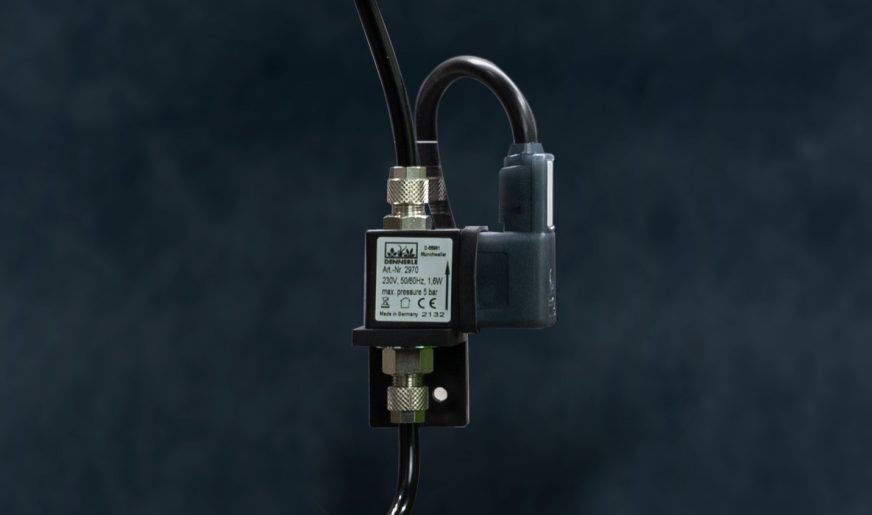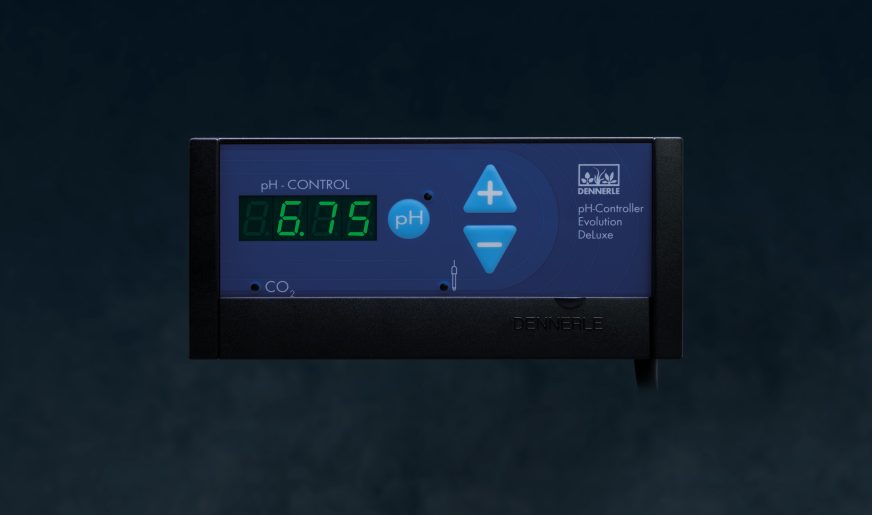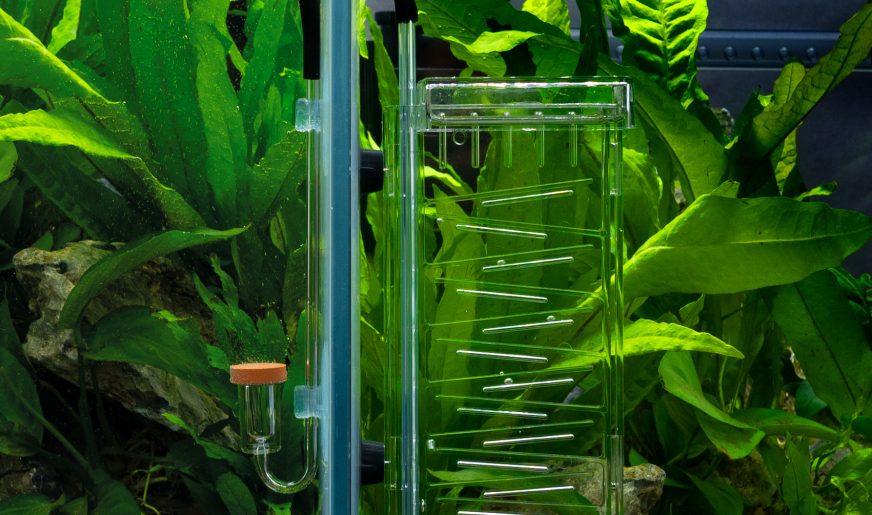Stage 1: Night shut-off
Overnight the plants do not consume CO2 – so a CO2 fertilization at night would not make sense at all. On the contrary, if too much CO2 is gradually dissolved in the aquarium water overnight, this can cause distress to the fish and invertebrates. Therefore, it makes sense to turn off the CO2 supply when the lights are turned off in the aquarium. Of course, you could turn off the CO2 manually night after night – an electric solenoid valve, on the other hand, can be conveniently coupled with a timer and thus automatically run the CO2 supply synchronously with your lighting time.

Stage 2: pH controller
The Dennerle pH controller is an aquarium computer that monitors your pH value in the aquarium and automatically regulates the CO2 addition. If the pH rises, more CO2 is added, if it falls (for example overnight), the CO2 supply is reduced.

CO2 addition devices
The CO2 comes as a gas from the pressurized gas cylinder and must therefore first dissolve in the aquarium water. A CO2 addition device allows the bubbles the longest possible contact with the water, so that a correspondingly large amount of the gas can dissolve in the water on its way to the water surface.

Flipper series
The Dennerle Flipper consists of a staircase filled with water, through which the individual CO2 bubbles travel very slowly upwards. This way a large amount of CO2 dissolves in the water. Dennerle Flippers are available for aquariums from 10 to 600 liters.
Diffusers
In the diffuser, the CO2 gas is pressed through a fine ceramic membrane and thus atomized into micro-fine bubbles, which enormously increases the contact surface with the water. Thus the gas dissolves particularly well. Our shapely diffusers have the advantage over the flippers of better optics – in terms of functionality, the two principles do not have much in common. At Dennerle you will find diffusers for aquariums from 100 to 400 liters.
Further accessories
Check valve
The return valve prevents creeping water in the CO2 hose from moving upwards and destroying your valuable pressure reducer. Note: The arrow must always point in the direction of the aquarium so that the CO2 reaches the water! CO2 special check valve
Bubble counter
A bubble counter is installed in the CO2 line and helps you to set the exact number of bubbles for your CO2 system. As a rule of thumb for the basic setting we recommend 1 bubble per minute for 10 liters of aquarium water, for example 6 bubbles per minute for a 60 liter aquarium.
CO2 hose
For the CO2 supply of your aquarium you need a special CO2 resistant pressure hose. Through normal air hoses the gas would diffuse too fast to the outside, the losses would be much too high. In addition to the classic black CO2 hose, we also carry a transparent version, which is visually less conspicuous and is particularly popular in aquascaping and for display aquariums. CO2 hose
CO2 long-term test
In the long-term test, a test liquid shows you by color change whether the amount of CO2 in the aquarium is set correctly. Blue means too little, yellow too much CO2. Green means the concentration is just right. The liquid is only indirectly connected to the aquarium via an air bubble. Therefore, give your long-term test two to three hours to react if you change anything in your CO2 supply in the aquarium.
